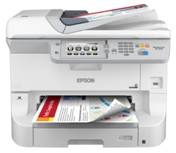In April 2009, Collins America announced it was planning what it said was the world’s first product line of native Mini DisplayPort connected LCD displays made just for Macs. Now the first of the CinemaView line (http://www.cinemaview.com) — a 24-inch model — is here and “MacNews” has received one of the first production units.
And it’s about as Apple-like as a non-Apple display can be. But first some background info.
The Mini DisplayPort Connector is a small form factor connector designed to fully support the VESA DisplayPort protocol. Apple says it’s particularly useful on systems where space is at a premium, such as portable computers or to support multiple connectors on reduced height add-in cards. The dimensional specifications of the plug and receptacle mating interface and a recommended PCB landing pad are available for download under the Mini DisplayPort Evaluation License.
Since Apple transitioned its entire Mac product line to the new Mini DisplayPort jack for connecting external displays no manufacturer has offered plug-compatible display products except for Apple itself. Also, no display maker has adopted Apple’s current industrial design theme of aluminum, black, and glass in products aesthetically matched to current Macs. Until now.
The first CinemaView is a 24-incher with 1920 x 1080 resolution and is priced at US$499. The only fair way to gauge the value of the display is to compare it to Apple’s $899 24-inch Cinema Display. So let’s do just that.
Both have the same size and color support (16.7 million colors). The Apple display sports: 1920 x 1200, a viewing angle of 178 degrees horizontal and 178 degrees vertical; brightness of 330 cd/m2; a contrast ratio of 1000:1, three USB ports; a 2.1 speaker system; and a built-in iSight camera. It weighs 21 pounds.
The CinemaView touts: a 1920 x 1080 resolution; a viewing angle of 170 degrees horizontal and 160 degrees vertical; brightness of 330 cd/m2; a contrast ratio of 1000:1 ratio; and four USB ports. It weighs 18.9 pounds and has no built-in speakers or an iSight camera.
Also, the Apple display uses a LED backlit screen. The CinemaView uses four CCFL backlights, not LED.
The CinemaView also lacks, like its Apple cousin, an HDMI input. Which is too bad, as it would have given the folks at Collins a marketing tool for the display. Also, there’s no VESA mount.
Still, their display looks gorgeous. The screen serves up deep and vibrant colors that provide striking images. And though the viewing angles on this monitor were a bit less than the Apple display, I could see just about everything on the screen from practically every angle.
There are three extremely difficult precision high pressure die cast Aluminum components in the CV24 design: the perimeter “UniFrame” frame, the rear tilt housing, and, that sexy 3D curve table base.
So is the CinemaView for you? If you’d like a secondary Mac display, it’s perfect. If you want to use it as your primary display, you’ll need to decide if you need built-in speakers, a built-in webcam and built-in MagSafe. If you HAVE to have these items, you’ll need to fork out the extra $400 for the Apple device.
If not, go for the CinemaView. Compared to the Apple product, you can buy it, a decent set of external speakers and a webcam — and still have some pocket change.
Macsimum rating: 8 out of 10



